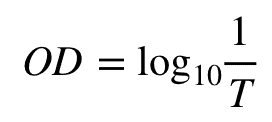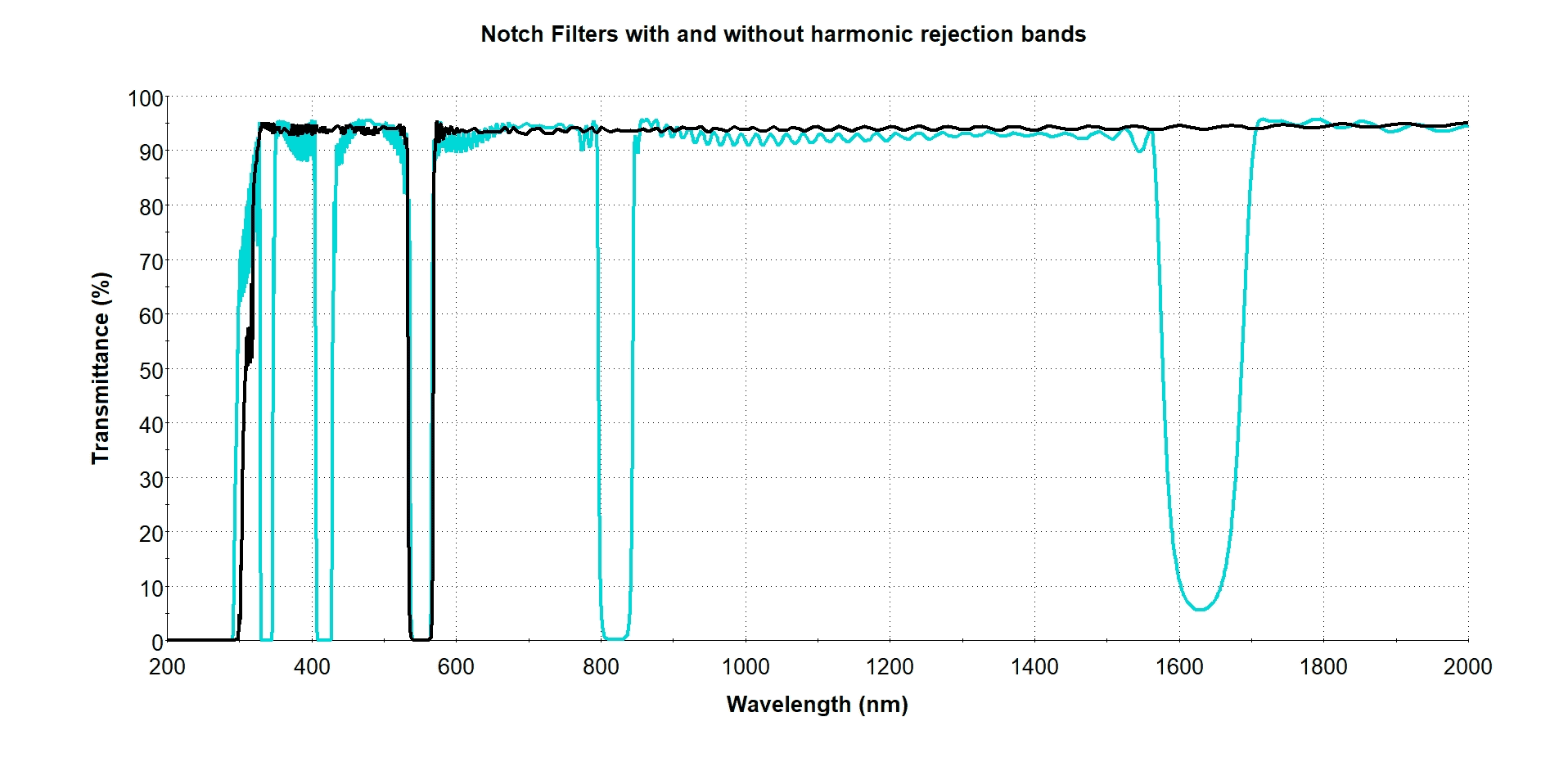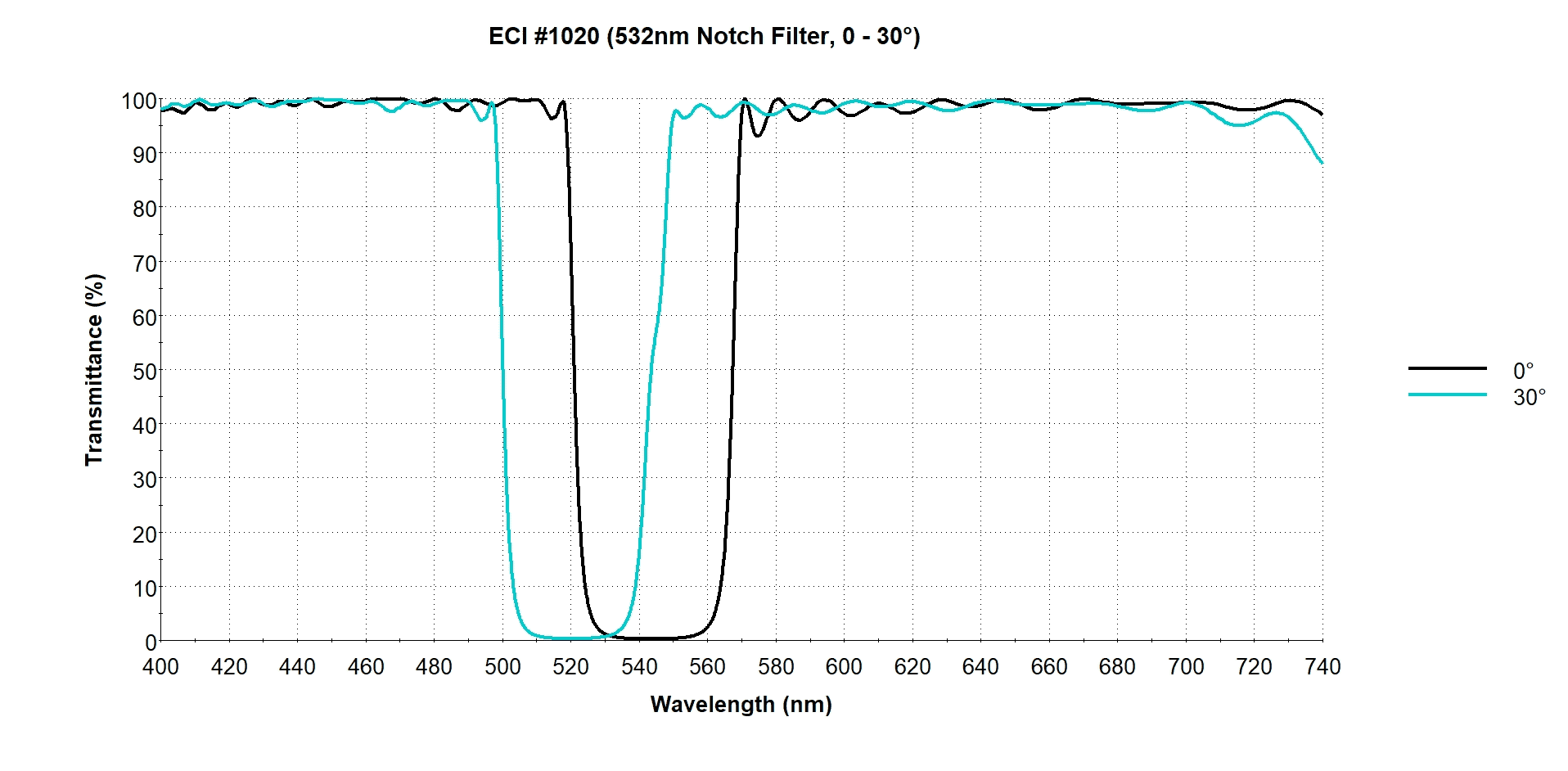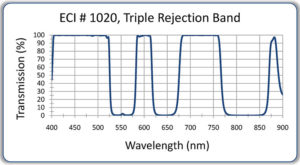Typical Rejection Optical Notch Filter Designs
A rejection filter, also known as a band-stop or stop-band filter is the opposite of a bandpass filter. It is a type of filter that rejects frequencies within the band and transmits frequencies outside of the band.
Notch Filters are designed to block or reject a certain wavelength region while allowing the light on either side of the blocking region to pass through. They can be viewed as an inverse of a bandpass filter.
Like other filters, a notch filter can also be designed for various rejection levels, which is typically specified in terms of optical density (OD). The optical density (OD) is defined by a numerical value that coincides with a % transmission through a given medium. Table 1 shows this relationship via the equation given below.
| OD | Transmission (%)* |
|---|---|
| 0.0 | 100.00 |
| 0.3 | 50.12 |
| 1.0 | 10.00 |
| 1.5 | 3.16 |
| 2.0 | 1.00 |
| 2.5 | 0.32 |
| 3.0 | 0.10 |
| 4.0 | 0.01 |
| 5.0 | 0.001 |
Table 1. Relationship between OD and %T

where OD is optical density and T is absolute transmittance
While notch filters can be designed for various bandwidths, narrow band filters are more common. Filters with narrower bandwidths and denser blocking will require thicker coatings. These coatings can be more expensive and exhibit high levels of stress.
Traditional band stop filters will also have harmonic rejection bands. These harmonic bands are only of concern in applications where wide pass bands are required.
We can adjust coating designs to eliminate harmonic rejection bands; however, such coatings will be thicker and more complex. Figure 1 shows and example with harmonic rejection bands and where the harmonic rejection bands have been eliminated.

Figure 1: Notch Filter with and without Harmonic Rejection Bands
Certain notch filters can be used over relatively wide angle ranges. For these type of filters the rejection band will be centered in such a way that allows sufficient rejection over the entire angle range.
This is ideal for use in laser eye protection applications, where the eye would need to be protected from laser light that is incident over a variety of angles. Figure 2 shows an example of how such a filter might be peaked around a certain wavelength.

Figure 2: 532nm Notch Filter designed for AOI = 0 – 30°
Notch Filter Applications
Notch filters, or stop-band filters, are used for a variety of applications, where some wavelengths need to be transmitted, and others need to be blocked and/or reflected.
Many forms of spectroscopy use these types of filters in order to assess the vibrational and rotational characteristics of crystal and molecular structures. This ability can be helpful in assessing forensic evidence, drug detection, identification of an unknown substance, as well as how molecular structures react in certain environments.
Spectroscopy is one of the main scientific instruments used within life sciences research and technology. With the help of these filters, scientists can better assess the characteristics of molecules through the isolation of specific wavelengths of interest.
Optical density plays an important role in determining the strength of a filter. Optical density measurements can aid in the measurement of biomass concentration, growth of a culture of microorganisms, and other analytical techniques within the life science industry.
Optical communication systems use them in order to block any distortions that can occur in the pathway of light. Notch filters are commonly used for laser safety applications, such as laser eye protection. In this case, safety glasses are coated and designed to reject potentially harmful laser wavelengths.
Typical rejection filters provide up to 85% peak transmission. Designs are available for deposition onto glass, crystals, semiconductor materials, fiber ends, polymers and other temperature sensitive materials.
Contact our design team to discuss your specific requirements including: transmission wavelength range, steepness of cut on and cut off transitions, optical density, angle of incidence and incident medium.
Designs meet or exceed the environmental requirements of MIL-C-48497.
Contact our design team to discuss your specific Rejection Optical Filters application!



